Hepatobiliary: Diffuse Liver Disease, Part 2
Oral
Body: Breast, Chest, Abdomen, Pelvis
Tuesday, 19 June 2018
| S06 |
16:15 - 18:15 |
Moderators: Takeshi Yokoo, Mi-Suk Park |
16:15
|
0608.
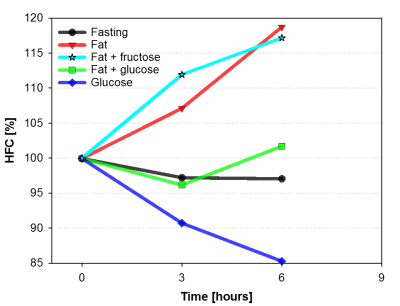 |
 Dietary intervention can induce changes in hepatic fat content during the day detectable by MR spectroscopy Dietary intervention can induce changes in hepatic fat content during the day detectable by MR spectroscopy
Monika Dezortova, Tereza Blahova, Miloslav Drobny, Petr Sedivy, Jan Kovar, Milan Hajek
We analyzed in vivo hepatic fat content changes during the day under different dietary interventions (fasting, fat alone, fat + fructose, fat + glucose, and glucose alone). Single voxel 1H MR spectroscopy of the liver in ten healthy volunteers was used at 3T MR system. We demonstrated that it is possible to induce the hepatic fat content changes by appropriately chosen dietary interventions and that such changes can be detected noninvasively by 1H MR spectroscopy.
|
16:27
|
0609.
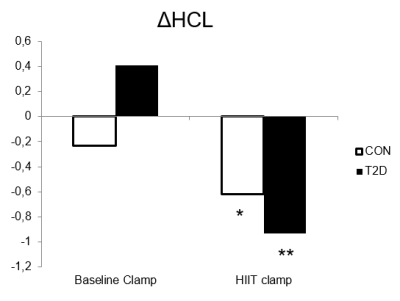 |
Dynamics of adipose tissue and liver fat: Effects of acute exercise
Video Permission Withheld
Jesper Lundbom, Maria Apostolopoulou, Martin Röhling, Julia Szendrödi, Michael Roden
Impaired adipose tissue fat uptake may lead to liver fat accumulation. Acute exercise releases adipose tissue fat, which also increases liver fat. Here we examine how a single bout of HIIT exercise affects the dynamics of adipose tissue and liver fat by MRS and an insulin clamp. Subjecting participants to a single bout of HIIT resulted in an improved response to insulin in both adipose tissue and liver. These results suggest that adipose tissue sequesters harmful saturated fats that otherwise would accumulate in the liver and that exercise improves the uptake of these fats thereby leading to long-term health effects.
|
16:39
|
0610.
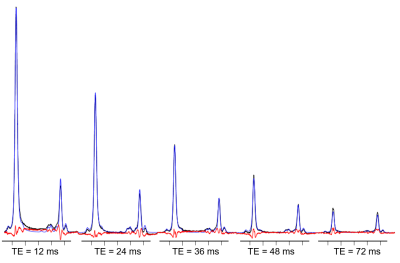 |
 A Novel Analysis Strategy for Assessing Liver Lipid Composition with Magnetic Resonance Spectroscopy A Novel Analysis Strategy for Assessing Liver Lipid Composition with Magnetic Resonance Spectroscopy
Patrick Bolan, Malgorzata Marjanska, Aaron Kelly, Justin Ryder
Measuring lipid composition (e.g., saturation levels) with MRS requires analysis of small lipid resonances in addition to the 1.3 ppm methylene peak. This is straightforward in adipose tissue but difficult in the liver due to lower concentration and greater spectral linewidths. In this work we propose a new fitting method that models the full lipid spectrum from 3 parameters and fits a multi-TE array of spectra simultaneously. This approach produces repeatable and physically reasonable estimations of liver fat composition in a wide range of fat factions.
|
16:51
|
0611.
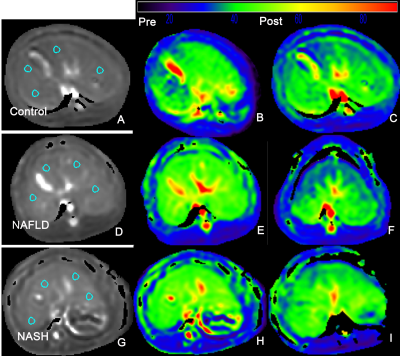 |
 Gd-EOB-DTPA-enhanced T1? Imaging vs. Diffusion Metrics for Assessment Liver Inflammation and Early Stage Fibrosis of Nonalcoholic Steatohepatitis in Rabbits Gd-EOB-DTPA-enhanced T1? Imaging vs. Diffusion Metrics for Assessment Liver Inflammation and Early Stage Fibrosis of Nonalcoholic Steatohepatitis in Rabbits
Xie Yuanliang, Wang Xiang, Zhang Hongfeng, Wang Xiaoqi, Jin Chaolin, Xu Yikai
This study is to evaluate applications of T1ρ, T1ρ on hepatobiliary phase (HBP, with Gd-EOB-DTPA enhancement) and IVIM in assessing of early-stage NASH in rabbits model. Results show that T1ρ (HBP) after Gd-EOB-DTPA administration is a more sensitive method for assessment of NAFLD activity, while a combination of T1ρ(HBP) and IVIM showed highest diagnostic value.
|
17:03
|
0612.
 |
 Assessment of Portal Hypertension with Multi-parametric Hepatic MR Elastography in Mouse Models Assessment of Portal Hypertension with Multi-parametric Hepatic MR Elastography in Mouse Models
Jiahui Li, Moira B Hilscher, Kevin J. Glaser, Douglas A. Simonetto, Vijay Shah, Richard L. Ehman, Meng Yin
We used multi-parametric hepatic MR Elastography (MRE) in two different mouse models with congestion and cirrhosis-induced portal hypertension, respectively. Spearman correlation was used to analyze the relationships between the MRE-assessed liver stiffness, damping ratio, volumetric strain, stiffness frequency dispersion, and the portal pressure directly measuared in vivo. We found that volumetric strain and damping ratio had negative correlations (ρ=-0.7515, ρ=-0.5528 respectively), while shear stiffness had a positive correlation (ρ=0.6983) with portal pressure. Additionally, damping ratio changes differently in portal hypertension induced by congestion and cirrhosis. In summary, multi-parametric MRE has potential to differentiate and quantify congestion and cirrhosis-induced portal hypertension.
|
17:15
|
0613.
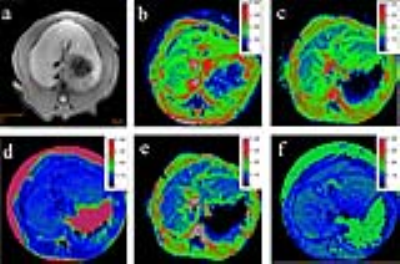 |
 Staging of rat liver fibrosis using monoexponential, stretched exponential and diffusion kurtosis models with diffusion weighted imaging- magnetic resonance Staging of rat liver fibrosis using monoexponential, stretched exponential and diffusion kurtosis models with diffusion weighted imaging- magnetic resonance
Genwen Hu, Jianmin Xu, Xianyue Quan, Liangping Luo, Yingjie Mei
Non-Gaussian DWI in Various Stages of Liver Fibrosis
|
17:27
|
0614.
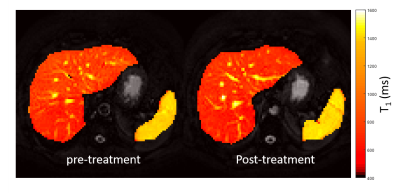 |
 Observed MRI changes following Directly-Acting Antiviral Therapy in Hepatitis-C virus patients Observed MRI changes following Directly-Acting Antiviral Therapy in Hepatitis-C virus patients
Chris Bradley, Rob Scott, Eleanor Cox, Naaventhan Palaniyappan, Neil Guha, Guru Aithal, Susan Francis
Hepatitis C Virus (HCV) is globally the largest viral cause of mortality. Directly Acting Antiviral (DAA) therapy achieves >90% sustained virological response in HCV patients. We used multiparametric MRI to assess changes in hepatic angio-architecture after patients had DAA therapy. The time window between pre- and post-treatment scans was of 3-6 months. We observed changes in hepatic microstructure indicated by a reduction in liver T1 (35±4ms), T2 (2.5±0.8ms) and T2* (3.0±0.7ms) which we suggest are linked to reduced pro-inflammatory milieu, including interstitial oedema, within the liver. No changes were observed in hepatic/splanchnic blood flow or perfusion.
|
17:39
|
0615.
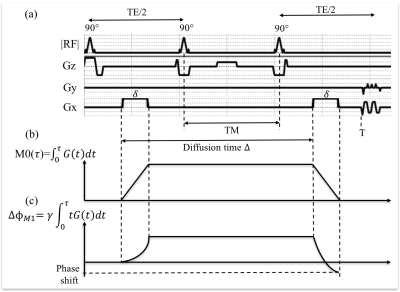 |
 Quantitative Characterization of the Motion Sensitivity of Stimulated Echo Diffusion-weighted Imaging in the Liver Quantitative Characterization of the Motion Sensitivity of Stimulated Echo Diffusion-weighted Imaging in the Liver
Yuxin Zhang, James Holmes, Kevin Johnson, Ty Cashen, Diego Hernando
STimulated Echo (STE) DWI is able to provide high b values with moderate echo times by increasing the mixing time (TM). However, long TM in STE-DWI also lead to increased sensitivity to bulk motion. To understand the tradeoff between SNR and motion sensitivity of STE DWI, this study assessed the quantitative relationship between TE, TM, and motion sensitivity in the liver with simulation and in-vivo experiments. As a result, the SNR and high motion sensitivity present an important trade-off with STE-DWI. In addition, when moment-nulling is used to compensate motion, the advantage of decreased TE from STE will be lost.
|
17:51
|
0616.
 |
 Golden Angle Radial Reconstruction Using Partial Separability for High Spatiotemporal Resolution Liver Dynamic Contrast-Enhanced Imaging Golden Angle Radial Reconstruction Using Partial Separability for High Spatiotemporal Resolution Liver Dynamic Contrast-Enhanced Imaging
Guanhua Wang, Haikun Qi, Yajie Wang, Huijun Chen
Dynamic Contrast-Enhanced imaging is an important tool in diagnosing hepatic diseases. Improving spatiotemporal resolution is of great significance for clinical purpose. In this work we introduce the partial separability constraint to the reconstruction of stack-of-stars golden angle radial data. Both in-vivo and stimulated liver experiment were conducted and the proposed method (PS+S) showed better reconstruction quality compared to the existing methods without partial separability constraint.
|
18:03
 |
0617.
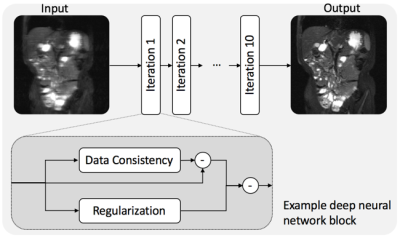 |
 Improving Variable-Density Single-Shot Fast Spin Echo with Deep-Learning Reconstruction Using Variational Networks Improving Variable-Density Single-Shot Fast Spin Echo with Deep-Learning Reconstruction Using Variational Networks
Feiyu Chen, Valentina Taviani, Itzik Malkiel, Joseph Cheng, Jamil Shaikh, Stephanie Chang, Christopher Hardy, John Pauly, Shreyas Vasanawala
In this work, a deep-learning-based reconstruction approach using a variational network (VN) was developed to accelerate the variable density single-shot fast spin echo (VD SSFSE) reconstruction. The image quality of this approach was clinically evaluated compared to standard parallel imaging and compressed sensing (PICS). The VN approach achieves improved image quality with higher perceived signal-to-noise ratio and sharpness. It also allows real-time image reconstruction of VD SSFSE sequences for practical clinical deployment.
|
|












